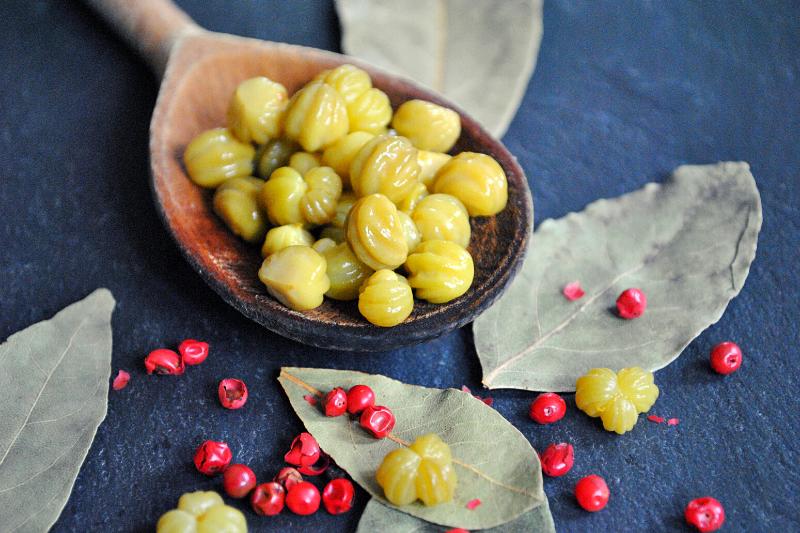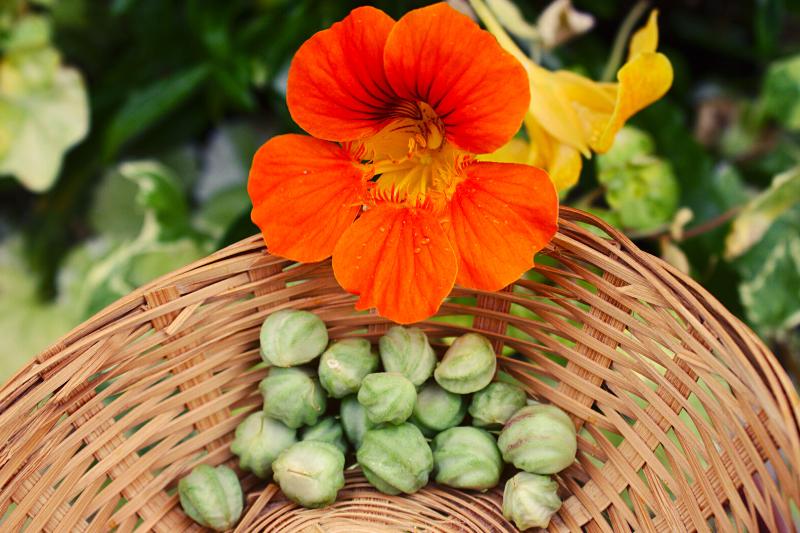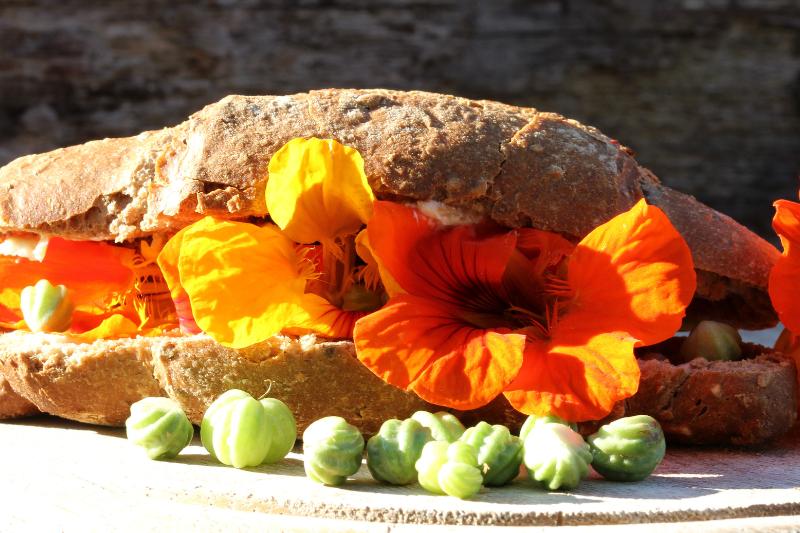Did you know nasturtiums, those beautiful annual plants you see climbing and flourishing in your garden, offer much more than the beauty of their flowers? Indeed, nasturtium flowers and leaves are edible, and they also add a peppery and colourful touch to summer salads and dishes! This is an incredibly generous plant that self-seeds year after year, climbing gracefully over any support within reach. These seeds are also edible! Discover our tutorial in which we will show you how to make capers from nasturtium seeds.

When and how to harvest?
To make these capers, we will need green nasturtium seeds and not flower buds (as for dandelion capers or daisy capers). The harvest of nasturtium seeds usually takes place in late summer or early autumn, when flowers have finished their life cycle and seeds have formed. For this recipe, pick seeds that are pale green to dark green with a slightly firm texture. Some gardeners also call them nasturtium "fruits". They are generally hidden under the leaves.

Ingrid's tip: Leave aside yellow or withered seeds, which are too ripe for capers but can be sown next spring to produce new nasturtium plants.
Nasturtium capers recipe
Ingredients:
- 250 g green nasturtium seeds;
- 2 tablespoons coarse sea salt;
- 250 ml white vinegar or cider vinegar.
Recipe steps:
1- Remove any remaining petals and stems from seeds. Keep only green, slightly firm seeds.
2- Wash seeds under a stream of water to remove impurities and small insects. Then dry them on absorbent paper or a clean cloth.
3- In a clean jar, add 2 tablespoons of salt and the nasturtium seeds. Close jar with its lid and shake to mix salt with seeds.
4- Leave this jar to rest for 24 hours in kitchen at room temperature.
5- The next day, open jar and rinse seeds under water to remove excess salt. Dry seeds on absorbent paper or a clean cloth.
6- Take a second clean, sterilised jar and place nasturtium seeds inside, filling up to three quarters of jar.
7- Pour vinegar until about 2 cm below rim, taking care to fully submerge seeds.
8- Close jar.
8- Store jar in a room at room temperature away from light for 3 weeks to a month minimum. Occasionally shake jar to mix ingredients.
Note: if you follow a low-salt diet, you can skip steps 3, 4 and 5 corresponding to the salting phase.
Tips
- You can mix different aromatics with your capers to vary flavours, as with pickles: peppercorns, fennel, juniper berries, thyme or bay leaves.
- Nasturtium capers are incredibly versatile in cooking. Use them to add a peppery touch to salads, pizzas or fish dishes.
- They are also delicious in pasta sauces, or simply sprinkled over fresh goat cheese.

Storage
- To store your nasturtium capers, keep them in a closed jar in a cool, dark place. They can keep for several months, even up to a year. However, flavour may begin to fade after six months, so it is best to consume them within that time for optimal taste.
- Once jar of nasturtium capers is opened, it is best to keep them in fridge for about 2 to 3 months. Ensure capers remain covered with vinegar to maintain freshness.
- As with any preserved food, use common sense: if you notice signs of spoilage such as colour changes, an odd smell or mould, do not eat capers.
To learn more
- For full details, see our article on nasturtium: planting, sowing and care.
- Fancy nasturtiums in garden or vegetable patch? Find our nasturtium seeds.































Comments